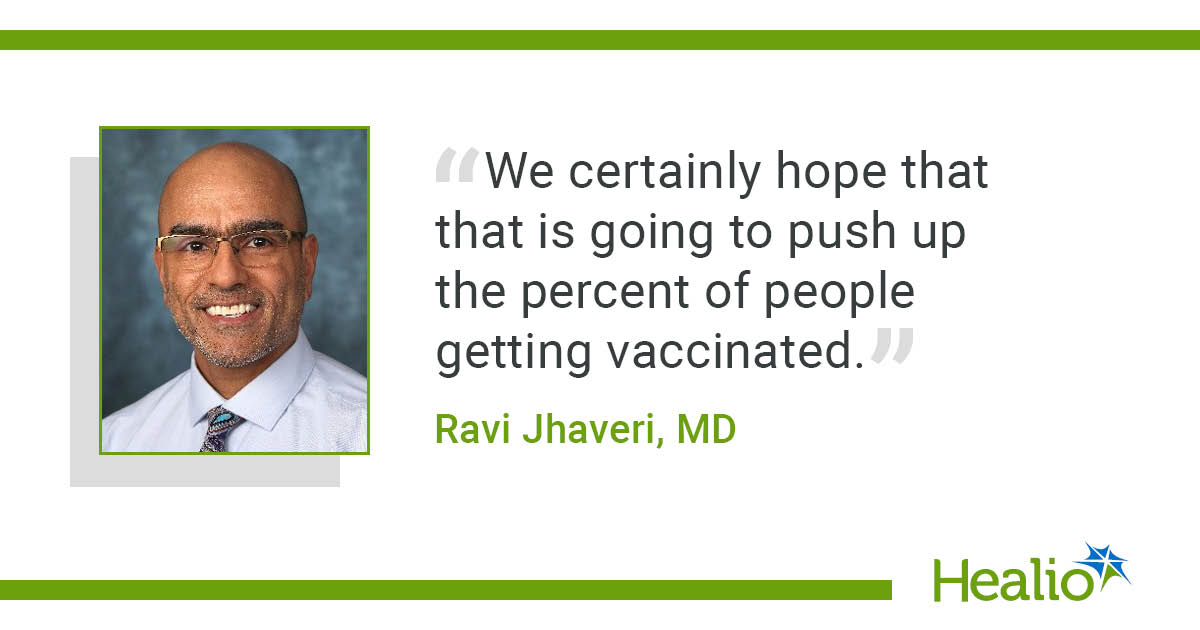October 07, 2025
3 min read
Key takeaways:
- Last year was the most active influenza season in 15 years.
- Influenza vaccination is more accessible than ever with the addition of a nasal spray that can be given at home.
For the first time ever, people can protect themselves and their children against influenza with an at-home option for vaccination.
AstraZeneca’s FluMist, an existing nasal spray vaccine, was approved by the FDA last year for home delivery and self- or caregiver-administration in people aged 2 to 49 years, although it must be administered by an adult if the recipient is aged younger than 18 years.

The vaccine, which contains a live but weakened influenza virus, has been approved for administration by a clinician since 2003. The expanded approved for home delivery was based on data from a study that showed adults could follow instructions on how to use the vaccine without additional guidance.
Home delivery is available now through an online pharmacy. Adults who want the spray delivered will need to complete a questionnaire first that will be reviewed by a pharmacist.
The home delivery program arrives on the heels of the worst flu season in 15 years, which Ravi Jhaveri, MD, head of the division of infectious diseases and Virginia H. Rogers Professor in Infectious Diseases at Lurie Children’s Hospital of Chicago, said was due, in part, to declining vaccination rates in recent years.
“We have seen tangible declines in people getting vaccinated,” he told Healio in an interview. “Even a few percentage points amongst children and young adults means that we are going to have tens of thousands, if not hundreds of thousands, more cases.”
Jhaveri said infectious disease physicians are worried that this year’s influenza season will be similar to last year’s and stressed that vaccination is the best way to prevent severe disease.
In an effort to make vaccination more accessible and convenient for families, Jhaveri worked with AstraZeneca to design and implement FluMist Home for the 2025-2026 respiratory season. We spoke with him about the program and influenza vaccination in general.
Healio: How can providers encourage influenza vaccination in their clinics?
Jhaveri: One way is seizing opportunity and making it convenient for families. In the past, many offices had flu vaccine days. Those are much less common in the COVID era. They really do not happen as much anymore, and we have offloaded a lot of responsibility to pharmacy. But certainly, bring it up. A recommendation from providers is really important.
The vaccine, while it may not be perfect, is the best means we have to prevent cases of flu. And not only cases. If you happen to get sick with the flu, those who are vaccinated have less severe illness. So, it is not only preventing many infections but also reducing the severity of the illness if you do get infected.
Healio: Are there certain populations for whom you would recommend FluMist over the injectable vaccine?
Jhaveri: I want to stress that FluMist is an equal option for anyone in the right age range — age 2 to 49 years — who does not have any excluding factors. The data suggest that it works well. The performance has been at least as good as the injectable vaccine, and in some cases, it might be just a nudge better.
For those who do not like any kind of needle, the nasal spray without a needle is a terrific option. I would certainly recommend it to those where convenience is an issue, and it is going to be a challenge to get to an office or a pharmacy. For parents or families with several kids, even scheduling one appointment is a challenge, let alone two, three or four more, so home delivery of a vaccine makes their life really easy.
Healio: Do you anticipate that FluMist Home will increase vaccine uptake this year?
Jhaveri: We hope that it removes some of the barriers. By ordering it on their phone or computer, they can have it and, in a few minutes, take care of their whole family or themselves.
We certainly hope that that is going to push up the percent of people getting vaccinated.
In one of our prior projects teaching parents how to give FluMist to their own kids, 10% of the participants said if we did not have the intranasal option for flu vaccine, they would have skipped it entirely. That 10% figure is consistent over similar studies.
For more information:
Ravi Jhaveri, MD, can be reached at pediatrics@healio.com.










